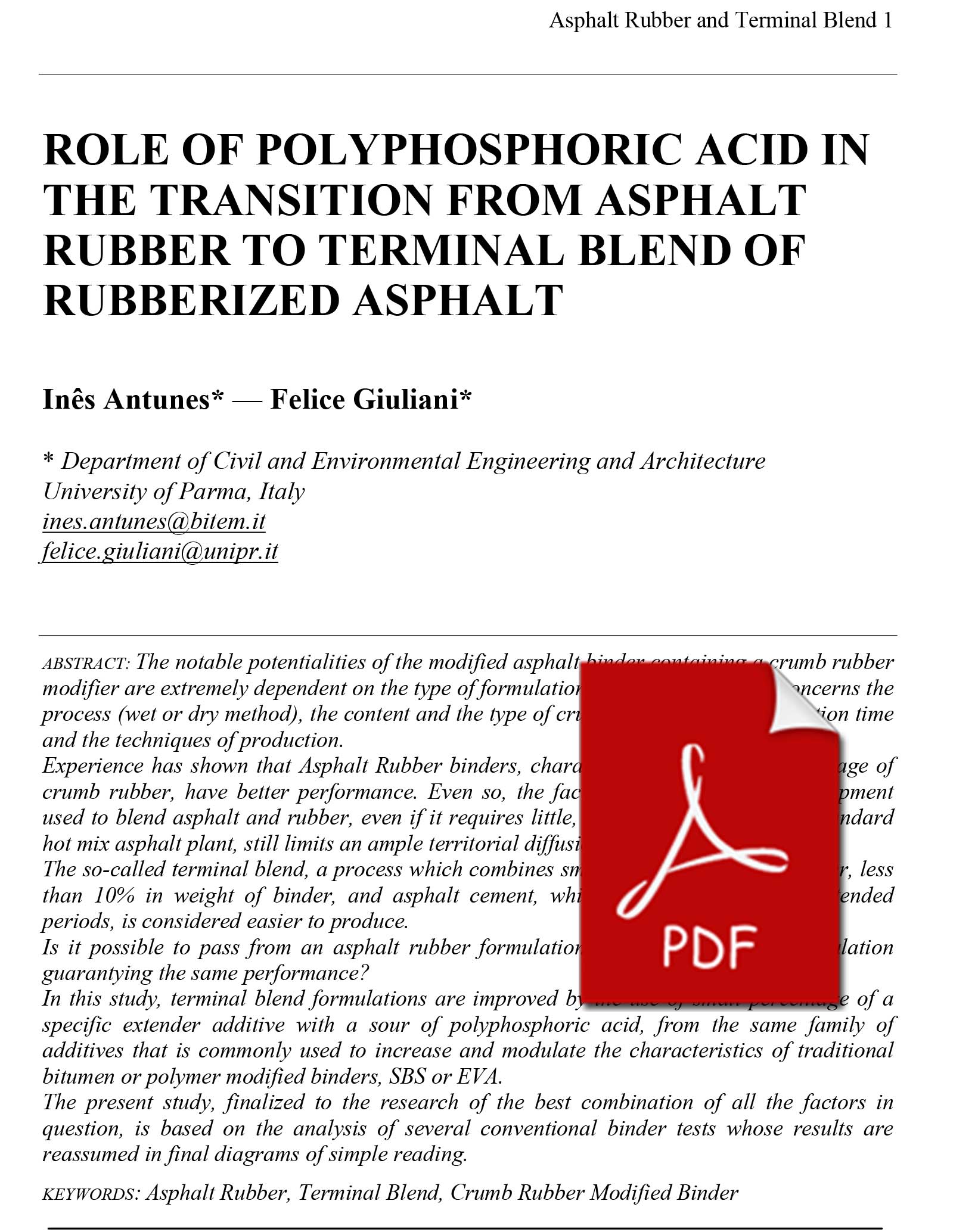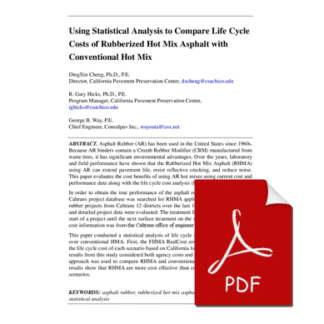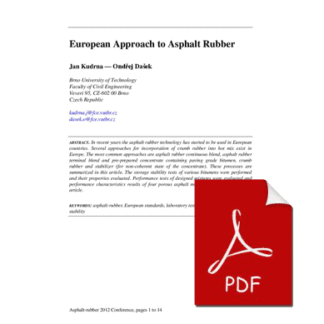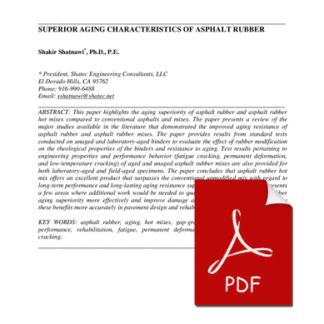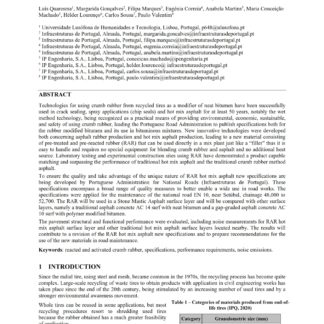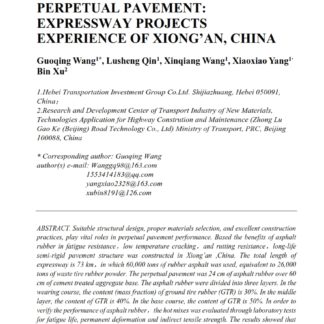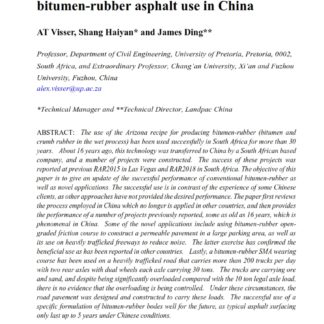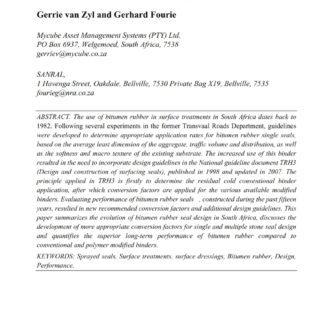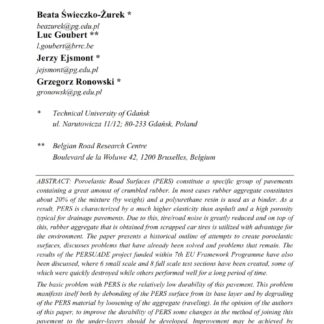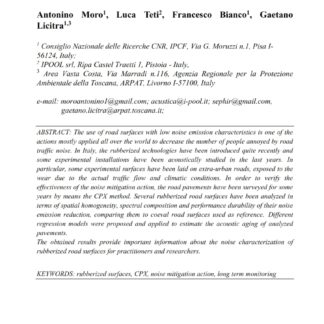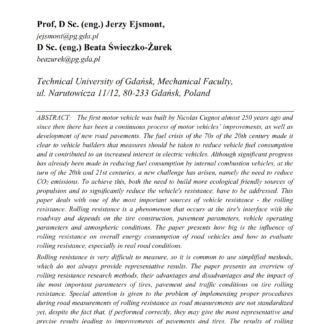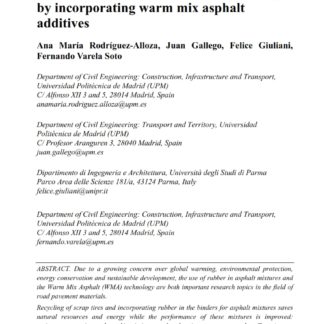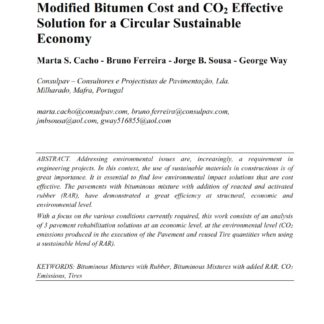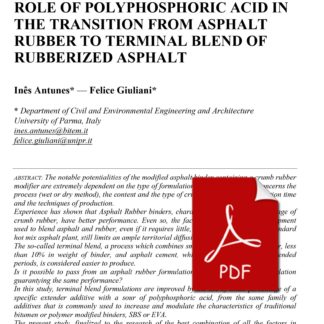Description
The notable potentialities of the modified asphalt binder containing a crumb rubber modifier are extremely dependent on the type of formulation, specifically to what concerns the process (wet or dry method), the content and the type of crumb rubber used, the reaction time and the techniques of production.
Experience has shown that Asphalt Rubber binders, characterized by its high percentage of crumb rubber, have better performance. Even so, the fact that it needs specific equipment used to blend asphalt and rubber, even if it requires little, if any, modification to a standard hot mix asphalt plant, still limits an ample territorial diffusion of asphalt rubber. The so-called terminal blend, a process which combines small amounts of crumb rubber, less than 10% in weight of binder, and asphalt cement, which is held in tanks for extended periods, is considered easier to produce.
Is it possible to pass from an asphalt rubber formulation to a terminal blend formulation guarantying the same performance? In this study, terminal blend formulations are improved by the use of small percentage of a specific extender additive with a sour of polyphosphoric acid, from the same family of additives that is commonly used to increase and modulate the characteristics of traditional bitumen or polymer modified binders, SBS or EVA.
The present study, finalized to the research of the best combination of all the factors in question, is based on the analysis of several conventional binder tests whose results are reassumed in final diagrams of simple reading.

